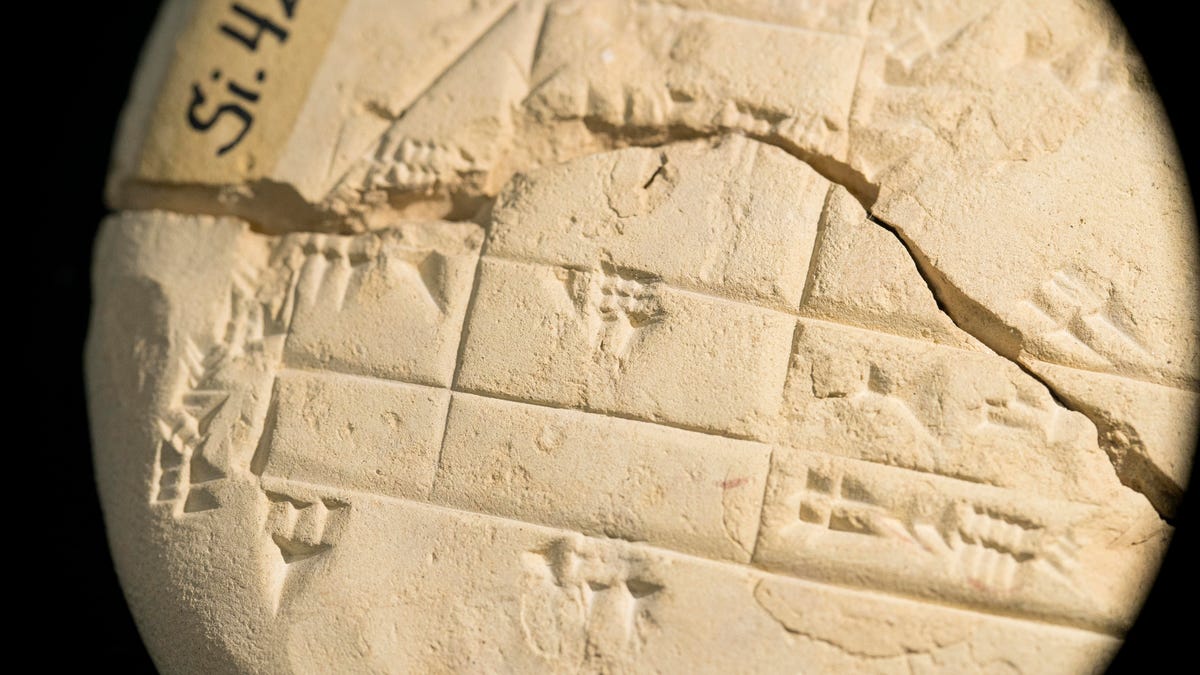Although many sources assert that the act of kissing spread globally from South Asia around 3500 years ago, evidence suggests that it was practiced in ancient Mesopotamia and Egypt long before that period.
The evidence supporting the practice of kissing in ancient Mesopotamia comes from preserved clay tablets inscribed with cuneiform script, used by cultures in the region between the Euphrates and Tigris rivers (present-day Iraq and Syria).
One notable artifact is a Babylonian clay model dating back to 1800 BC, depicting an erotic scene that suggests touching lips between a couple. These clay tablets are abundant in number, and they provide clear examples indicating that kissing held significance as a part of romantic intimacy in ancient times. Moreover, kissing was not limited to romantic relationships but also encompassed expressions of affection in friendships and among family members.

Ancient Babylonian clay (UNSW Sydney)
According to research and historical analysis, kissing can be categorized into two types: friendly-parental and romantic-sexual. While the former seems widespread across human societies throughout time and geography, the evidence suggests that romantic-sexual kissing is not universal, as stated in a 2015 research paper published in American Anthropologist.
Interestingly, romantic-sexual kissing appears more prevalent in stratified societies organized around a formal hierarchy, such as class or caste. Research indicates that this type of kissing likely evolved to assess a potential mate's suitability through chemical cues communicated in saliva or breath. These chemical cues could help foster attachment between couples and facilitate sexual arousal.
Notably, humans are not the only species to engage in kissing-like behavior. Some of our distant relatives, such as bonobos and chimpanzees, also exhibit forms of kissing. Bonobos engage in romantic-sexual mouth-to-mouth kissing, while chimpanzees employ platonic kisses to manage social relationships. Since these species are the closest living relatives to humans, their practice of kissing may provide insights into how the behavior evolved in our ancestors.
Dr. Arbøll, an expert on the history of medicine in Mesopotamia at the University of Copenhagen, highlights that ancient Mesopotamian texts on clay tablets support the notion that kissing was considered part of romantic intimacy in ancient times and within friendships and family relationships. These tablets offer valuable insights into the cultural and social aspects of kissing during that period, along with the observation of kissing in other species, contributing to the evidence suggesting that kissing is a fundamental human behavior practiced in various ancient cultures over millennia.
Therefore, it is more accurate to view kissing as a behavior practiced in multiple regions and cultures throughout history rather than originating from a single source and spreading. The evidence from Mesopotamian tablets, combined with kissing in other species, strengthens the argument that kissing holds significant cultural and biological significance as human behavior.
According to the researchers, kissing may have inadvertently contributed to transmitting viruses, such as herpes simplex 1 (HSV-1), responsible for cold sores. The conclusion is based on analyzing a significant collection of Mesopotamian medical texts.
Within these texts, the researchers discovered references to a disease that exhibited symptoms similar to those caused by the herpes simplex virus 1. Dr. Arboll cautions, however, that ancient medical texts can be influenced by cultural and religious concepts, which means they cannot be interpreted literally.
Despite this caveat, the researchers found parallels between the disease described as "bushing" in the ancient Mesopotamian medical texts and the symptoms associated with herpes simplex infections. The bushing disease primarily affects the mouth and throat, and its symptoms include the presence of vesicles in or around the mouth, which aligns with one of the prominent signs of herpes infection.
While these findings suggest a potential link between ancient diseases and herpes simplex infections, it is crucial to consider the limitations of interpreting ancient medical texts and to rely on further research and evidence to establish a conclusive connection.




